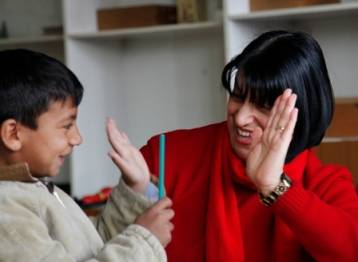28Mar2014
Inclusive Education

Getting all children into school, keeping them in the classroom and ensuring that they get a quality education are top priorities for UNICEF in Serbia. Our goal is inclusive education, with no child denied the right to learn.
Inclusive education is a legal obligation in Serbia and the landmark 2009 Law on Education requires the full inclusion of children who once languished outside the education system. UNICEF works with the government, municipalities, schools, teachers and parents to make this law on paper a reality in the classroom, backed by the necessary resources, capacity and standards.
The challenges
There is a long way to go. Most young children from vulnerable groups do not attend pre-school programmes. As a result, they may not be ‘ready’ for school, and at risk of non-enrolment or dropping out early. Many children with disabilities, and up to one third of Roma children, still attend ‘special’ schools. Those with special needs who enrol in mainstream education or make the transition to mainstream schools are more likely to drop out, with hard-pressed teachers often lacking the training and support to apply inclusive practices. Parents, meanwhile, may be unaware of their child’s right to education, or how to claim that right.
As a result, some children fall behind from the start and the gaps grow wider as they grow older, particularly for girls.
What we do
 While enrolment and completion rates for Roma children have risen by around 20 per cent since 2005, and more children with disabilities are being enrolled in mainstream schools, UNICEF is pushing to close the remaining gaps between law and the reality once and for all.
While enrolment and completion rates for Roma children have risen by around 20 per cent since 2005, and more children with disabilities are being enrolled in mainstream schools, UNICEF is pushing to close the remaining gaps between law and the reality once and for all.
The introduction of the one-year compulsory Pre-School Programme (PPP) may make a dent in low Roma enrolment rates, with more than 78 per cent of Roma children taking part in 2010, and more than 90 per cent enrolling in primary schools that year. But it is important to build on this momentum in the classroom.
Building the evidence
As well as supporting the Multiple Indicator Cluster Surveys that provide all key data on child well-being, UNICEF’s assessment of inclusive education has shown how the education law works in practice, helping to pinpoint problems and develop responses.
We are working to calculate the true cost of inclusive education, which will inform in a per capita formula funding system, shifting the focus from the costs per class to the costs per child.
We are exploring the best strategic options to help the poorest municipalities to provide resources to meet their legal obligations to fund inclusive education.
We are analyzing the barriers to education that lie beyond education itself, including poverty and discrimination.



